The Council had the pleasure of interviewing Rashin Kheiriyeh, an award-winning painter, illustrator, animator, and author from Iran.
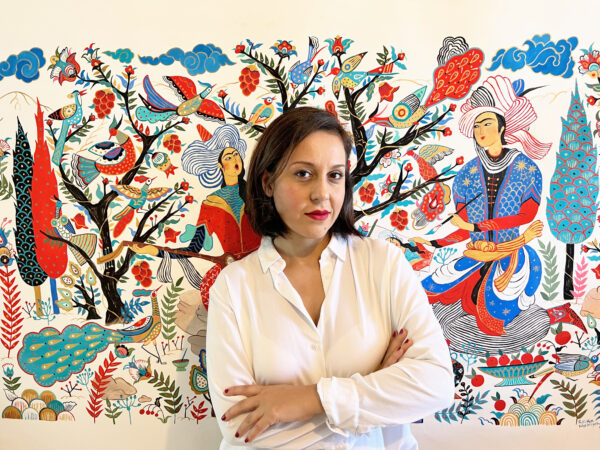
Rashin has over two decades of experience in publication and broadcasting. She has published over ninety children’s books in countries such as the United States, Canada, France, Italy, Japan, Germany, Switzerland, Ukraine, Emirates, Turkey, Spain, South Korea, China, Brazil, India, and Iran. She has received over fifty national and international awards.
Rashin is also the character artist of the most popular Iranian animation series called Sugarland/Shekarestan for national television in Iran.
Having been born in Khorramshahr, a city near the border, during the Iran-Iraq War, Rashin’s childhood was shaped by both joy and adversity.
“When the war intensified, our house was destroyed in a strike. My family had to flee to safety and eventually settled in the north of Iran,” Rashin said. “Despite the challenges of war, I was lucky enough to be raised by great parents who appreciate art and are supportive.”
Her family moved to Tehran, Iran’s capital, and Rashin attended the city’s first girls’ art school called Azadegan.
She received her master’s degree in graphic design, started her career as an artist with children’s magazines, and later moved to children’s books.
When recalling her introduction to the world of art, one childhood memory stands out vividly: spending time in the kitchen with her mom.
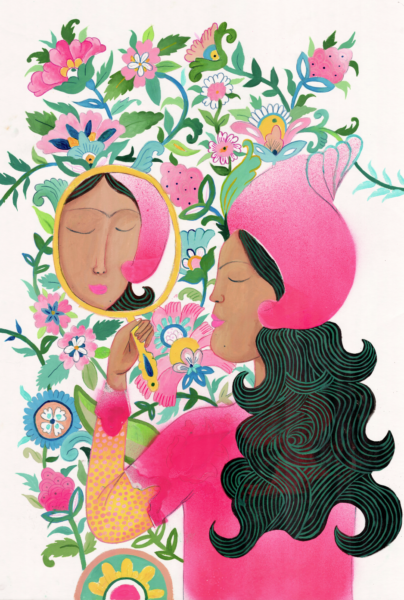
“My mother was a nurse and also a talented artist who introduced me to painting,” Rashin said.
“I recall watching her paint beautifully while she multitasked in the kitchen. One day, specifically, she put an easel and canvas in our kitchen and began painting and cooking at the same time,” she continued. “She taught me how to draw.”
Rashin also highlighted another significant memory with her mother: she was taken to the hospital where her mother worked when she was only three or four years old.
“I sat at her desk [in the hospital], and she gave me a piece of paper and a pen. I remember I did my first doodle then. I drew a huge face with curly hair and expressive eyes,” Rashin said.
“When she returned and saw my creation, she was overjoyed and treated me to ice cream. That day, I decided to become a painter when I grew up,” she continued.
Rashin showed her gratitude for the opportunities she had in contrast to her mother growing up in Iran.
“My mom really loved her nursing job, but she was also very talented in art. In those days, in my mom’s days, it was not common for girls to go to art school. Her father said you should be a nurse, so she became one,” she explained.
Following her mother’s teachings and branching off into her own style, she recounts her journey visiting and subsequently moving to the United States.
Rashin first visited the US in 2007 as part of an exchange program organized by the Meridian International Center and the State Department.
“A curator from the gallery came to Iran and visited all of the artists’ studios; when they selected a group of Iranian painters, I was one of them,” Rashin said. “I came to Washington, D.C. to help open an exhibition in the Meridian Gallery called ‘Wishes and Dreams’ alongside other Iranian contemporary artists.”
During this 2007 visit, she had the opportunity to explore art schools in New York City. Four years later, she returned permanently to study at the School of Visual Arts. She moved alone, without any family members.
“The transition to life in the United States presented many challenges, particularly being away from my family and adjusting to a new cultural environment,” Rashin said.
She attributes meeting her husband as a big reason she was able to stay in the United States and combat being far from home.
“I met my husband in New York; he is an Iranian graphic designer. When I got married, he was a piece of home,” Rashin said. “With him, I could manage homesickness. He helped me tremendously.”
After the experience of missing home, she embraces the opportunity to share and celebrate Iranian culture and traditions through her work, aiming “to bridge cultural divides and foster understanding between Iranian and American audiences.”
Rashin noted that when she emigrated to the United States twelve years ago, she realized there were not many children’s books with a Middle Eastern child as the main character, let alone an Iranian.
“In the children’s book community, there is a belief that every child should be able to see themselves represented in the books they read,” Rashin said.
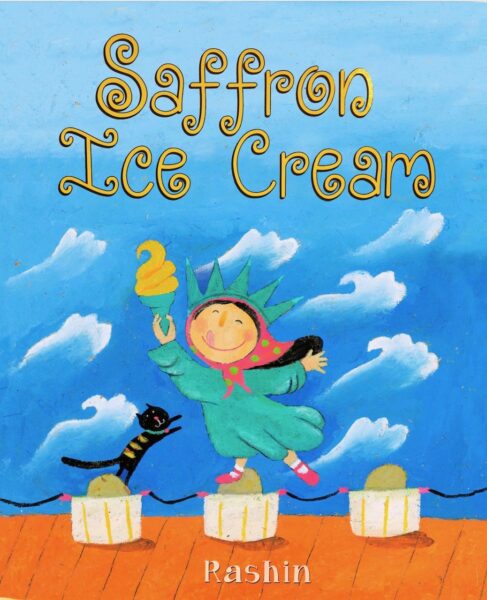
“That’s why seeing the lack of representation in the States inspired me to write Saffron Ice Cream.”
Saffron Ice Cream is the first book she wrote in English.
“The story is about an Iranian girl, around seven years ago, immigrating to New York with her family and visiting Coney Island during the summertime for the first time,” Rashin said, exploring how “the young girl and her family navigate the challenges and joys of their new life.”
The book is divided into two sections: one of the main character’s life is in the ‘new place’ in New York, and the other of memories in Iran. The character compares those two situations throughout the book.
“The part that happened in Iran is based on my memories in Iran, my true stories. But the part in New York came from my imagination,” Rashin said, noting that she named the main character after herself.
One of Rashin’s earliest memories of moving to New York was visiting Coney Island, so it holds a special significance for her, serving as a symbolic bridge between the two cultures.
“In Saffron Ice Cream, I depicted a family trip to Coney Island, where the main character experiences a sense of excitement for the taste of saffron ice cream she used to enjoy at the Caspian beach in Iran,” Rashin said. “That was a nostalgic reminder of my homeland.”
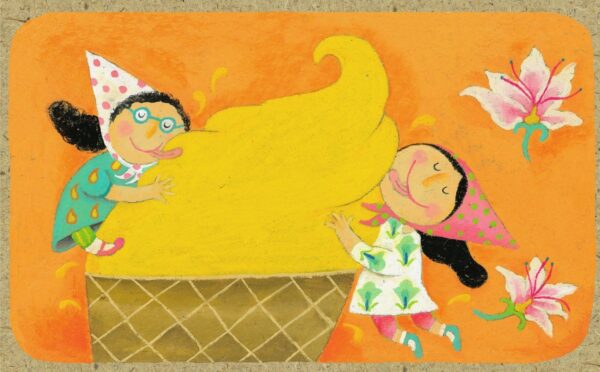
“This scene not only showcases the universal theme of longing and adaptation but also highlights the fusion and shared experiences between Iranian and American cultures.”
In Rashin’s illustrations, she presents Persian and Muslim topics personal to her, such as the 13th-century poet Rumi.
Rumi is one of many Persian poets and scholars Rashin draws inspiration from, along with Hafez, Ferdowsi, and Attar.
“[Specifically], Rumi’s profound wisdom and timeless storytelling have deeply influenced my work, infusing it with elements of tradition and culture,” Rashin said.
“In my modern approach to storytelling, I am also inspired by renowned authors and illustrators like Maurice Sendak and Hans Christian Andersen,” she continued.
Rashin highlights Andersen’s most popular story, The Little Mermaid, among other classics.
“We grew up with those stories; it was amazing. My mom told me at bedtime, I would tell her a thousand times, ‘please mom, tell me a story,” she said.
“Their imaginative narratives and captivating illustrations have shaped my artistic vision, guiding me in creating stories that resonate with contemporary audiences while honoring the legacy of Persian literature.”
Outside of artwork and illustrations in books, Rashin has a strong artistic presence in Iranian national television.
Being the character artist for “Shekarestan,” the most popular Iranian animation series in Iran, Rashin described the significant role of animation series in shaping her artistic upbringing.
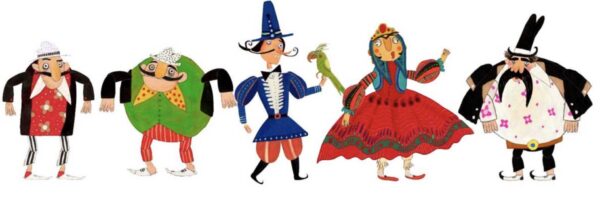
“Growing up, I loved Japanese animations, as Iranian high-quality animation productions didn’t exist,” Rashin said. “We weren’t at the level animation-wise that the Japanese were at that time.”
The birth of “Shekarestan” on Iran’s national TV was a revelation for the Iranian animation industry. It started in 2009 and still continues to air to this day.
“The comedic story [Shekarestan] is based on Persian folktales. The characters are at the same time modern and traditional,” Rashin said. “I tried to draw them based on classical Persian art and textiles. Their outfits were very traditional.”
At the beginning, the series commenced with 200 episodes, and it has only expanded since. Many Iranian animations followed a similar direction as “Shekarestan.”
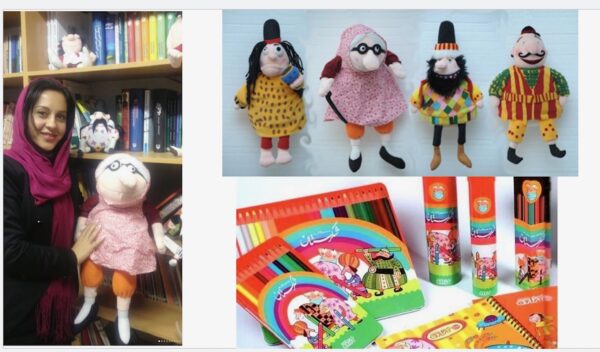
“My parents [who live in Iran] are still telling me, ‘Hey, Rashin, they’re showing your animations right now,’” Rashin said.
“I didn’t expect it to become so popular,” she continued. “There are puppets of the characters out there that people buy. There are school supplies with the design of Shekarestan.”
Her contribution to the series was a dream come true.
“It has allowed me to contribute to a groundbreaking series that influenced many Iranian animations that followed and I found a new audience,” Rashin said.
Rashin’s illustrations, both on TV and in books, tend to have a style of youthful nature with vibrant colors and composition.
Her artistic philosophy revolves around imagining herself as a child encountering the picture.
“I imagine that if I’m a child I’m looking at this illustration,” Rashin said. “I constantly ask myself questions like, “Do I like it? Does it make me laugh? Is it engaging enough?”
Over time, through experimentation and exploration, her style has grown and developed organically.
“This approach guides me to create artwork that resonates with the youthful spirit and curiosity of children. My style is a reflection of this philosophy,” Rashin said.
Her goal, ultimately, is to create illustrations that evoke emotion and spark creativity in young readers.
When asked which particular piece best embodied who she is, she quickly chose Rumi’s mother in her new book Rumi—Poet of Joy and Love. The image depicts a mother sitting in a garden and playing the setar, a Persian stringed instrument.
This piece resonates because it reflects a personal connection to her own experiences.
“The image captures a moment of peace and comfort, a connection to nature, Persian music,” Rashin said. “It’s me surrounded with nostalgia and warmth.”
The idea of Rumi—Poet of Joy and Love first came when she realized that there are many picture books based on Rumi, but very few discuss his life: who he was, how he grew up, and how he became a poet.
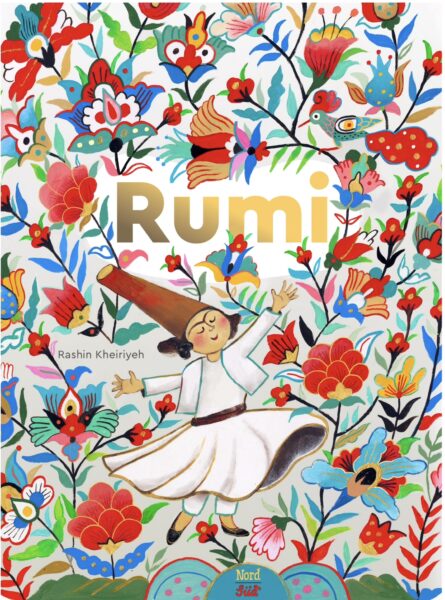
To develop the background for the publication, she devoured books written by and about him.
“I told the story in the simplest way I could,” Rashin said.
Similar to her work, she sees the general sentiment and direction of the art scene in the Middle East as dynamic and evolving, with artists striving to blend tradition with modernity.
“I am very proud of them [the Middle East art scene]. I am proud of its current state, especially considering the years of hardship Middle Eastern artists faced,” Rashin said.
“I’ve seen exhibitions in Dubai and many wonderful art galleries representing Iranian and Arab artists.”
Significant change she has seen since the start of her career come in the form of increased recognition and acceptance of Middle Eastern art on the global stage and “the growing emphasis on cultural exchange and collaboration within the region and beyond.”
With this evolution, Rashin believes there is an important step for American and other Western artists to take by collaborating with Middle Eastern artists more closely, and vice versa.
“By engaging with Middle Eastern art and artists, American artists can gain new perspectives, techniques, and inspirations that enrich their own practice,” Rashin said.
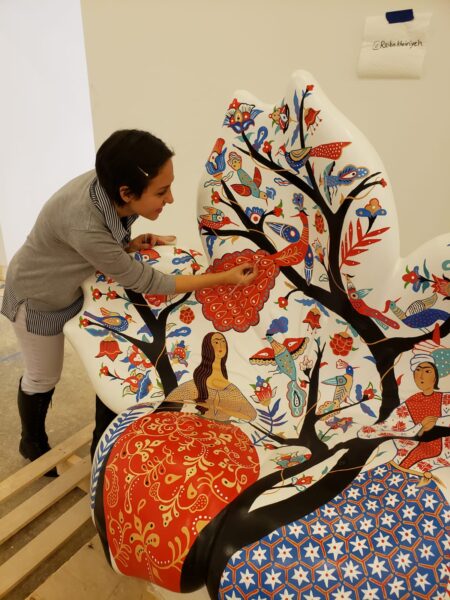
She described the benefits, such as promoting empathy and mutual respect from different backgrounds.
“I feel like some people don’t know this, but we have great artists from Europe that have been influenced by Oriental art from various Middle Eastern countries, especially in the 19th century,” Rashin said.
“Henry Matisse, for example, traveled to the Middle East and was inspired by different art and began to use some of those new elements in his paintings.”
She believes that such engagement can be inspiring for both Middle Eastern and American artists, providing a valuable opportunity to “exchange experiences and can grow together.”
When looking into the future, Rashin is thrilled to continue creating more children’s books and paintings.
She hopes to connect with more children from diverse backgrounds and cultures, fostering a love for reading and imagination through the launch of her new YouTube channel coming soon.
“I’m excited to unveil my new YouTube channel called ‘Kids Art Studio’ where I’ll utilize my platform to advocate for literacy and education,” Rashin said. “I’m going to teach kids how to draw.”
For each lesson, she will have a video explaining it in English, and another video explaining it in Farsi.
The idea first came to her during a school visit.
“I usually do a lot of school visits in the United States where I read my books and teach them how to draw some of my characters, and I recently had a few school visits in Hong Kong,” Rashin said.
During that visit, she showed the school kids how to draw Rumi dancing and asked them to follow along.
“Everything went really well. The kids loved it and were very engaged with my workshops and enjoyed it,” Rashin said. “That’s why it came to my mind. I thought, yeah, maybe I can make a channel showing kids all around the world how to draw.”
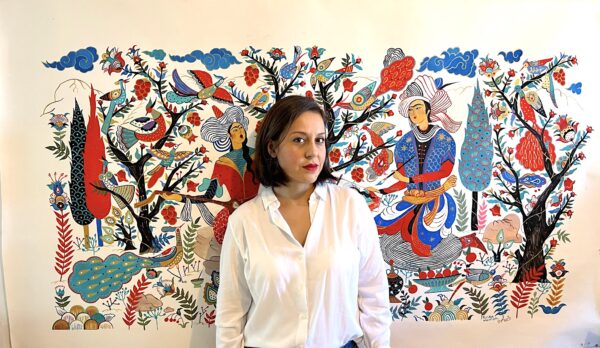
Towards the end of the conversation, when asked what advice Rashin would give to young girls and boys on finding their passion, she advocated for art.
“Consider becoming an artist because it’s so much fun to make art. Any form: writing, drawing, painting. Any form of art is amazing,” Rashin said.
“The thing is that all children like to draw. But over time some of them stop drawing, so I encourage them to keep doodling. I was a big doodler when I was little,” she continued. “Keep doodling.”
She said that she has seen many parents inventing a lot of sports for their children.
“They see a bright future for their kids, like to become a professional athlete. But not in art. I have to tell them, as an artist they can have a bright future and the income is good,” she said.
Rashin also strongly highlighted the importance of not being afraid to try new things and never underestimating the power of one’s imagination.
She noted the unlimited amount of fun and fulfillment in expressing oneself creatively.
“Consider becoming an artist when you grow up. There is so much fun and fulfillment in expressing yourself creatively, whether it’s through writing, drawing, or any other form of art,” Rashin said.

